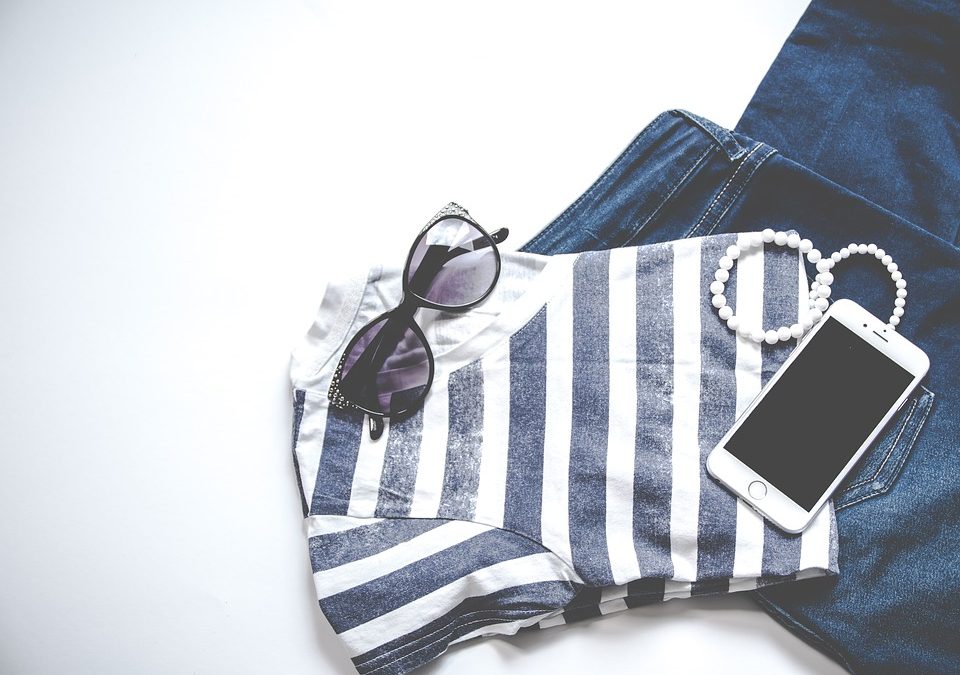Have your favorite pair of denim jeans faded to a lighter tone? Most men and women prefer deep, dark-colored jeans. A pair of indigo jeans, for example, will offer a dark blue appearance that complements most other garments and fashion accessories. Over time, however, jeans may fade from their original color to a lighter color.
Jeans typically fade for one of two reasons: sun bleaching or dye being released. Of course, sun bleaching occurs when jeans are exposed to sunlight for long periods of time, resulting in the gradual bleaching of its dye. But jeans can also fade to a lighter tone if their dye is released when being washed or dried. The good news is that you can protect your jeans from such fading using saltwater. It’s a simple yet highly effective way to set the dye in your jeans and, therefore, protect them from fading.
How Saltwater Works
You might be wondering how exactly saltwater can set the dye in your jeans and protect them from fading. Well, saltwater works by absorbing excess or loose dye, preventing that dye from being released by the jeans. If you simply wash your jeans in “regular” water, some of the loose dye may be released. It’s not a substantial amount of lost dye, but it’s still noticeable if you wash your jeans on a regular basis. Using saltwater, however, can minimize the effects of fading by setting the dye. The saltwater will absorb any loose dye while also setting the remaining dye.
There are other ways to protect your jeans from fading, but using saltwater is arguably one of the easiest and most effective solutions. You can purchase salt for just a few bucks from your local grocery store, and unlike other fade-protectant products, salt is completely natural and safe for the environment. For these reasons and others, many people prefer to use saltwater to set the dye in their jeans rather than other products.
Check the Fabric
Before attempting to use saltwater to set your jeans dye, you should first check to see what fabric or fabrics they are made of. You may assume they are made of entirely of denim, but they could feature other fabrics. And if your jeans aren’t made of 100% denim, the saltwater method may not work. You can only set the dye in a pair of jeans if they are made entirely of an organic fabric, such as denim. If your jeans have even a small amount of polyester or spandex — which is common with stretch jeans — you can’t use this method.
Prepare the Saltwater
Assuming your jeans are made entirely of denim — or any other organic fabric — it’s safe to proceed with the saltwater method. To get started, you’ll need to prepare a large bowl or bucket with water and salt. If you’re only treating a single pair of jeans, 1 gallon of water and 2 tablespoons of table salt should suffice. If you’re treating multiple pairs of jeans, simply double up on the water and salt. For two pairs of jeans, for example, use 2 gallons of water and 4 tablespoons of salt.

Submerge and Soak Jeans
After preparing and mixing water and salt in a large bowl or bucket, you can proceed to submerge and soak your jeans in the saltwater solution. Don’t just let your jeans float on the surface of the saltwater. Instead, push them all the way to the bottom, ensuring that they are completely submerged. If any part of your jeans isn’t fully submerged, that area won’t receive the fade-resistant properties as the rest of your jeans.
But what if your jeans won’t stay submerged in the saltwater? In this instance, you can try weighing them down with a heavy object, such as clean grill press. Regardless, you need to make sure your jeans are completely submerged in the saltwater.
With your jeans fully submerged in the saltwater, set a timer on your watch or smartphone for one hour. While there’s nothing wrong with allowing jeans to soak in saltwater for longer than one hour, this is the minimum length of time required to set the dye. Generally speaking, the longer you allow your jeans to soak in the saltwater, the better the results. Regardless, though, your jeans need to soak for at least one hour to fully absorb the saltwater and improve its fade-resistant properties.
Remove and Turn Inside Out
Assuming you’ve allowed your jeans to soak in the saltwater for at least an hour, it’s safe to remove them from. To avoid spilling the saltwater inside your home and potentially ruining your floors, you may want to do this outside. Just carefully remove your jeans from the bowl or bucket of saltwater, after which you can turn them inside out.
Wash in Cold Water
The final step to setting the dye involves washing your jeans in cold water. This is important because it will wash out any remaining salt lingering in or on your jeans. If you don’t wash your jeans in fresh, cold water, salt will likely remain. And while small amounts of salt shouldn’t cause any problems, large amounts can wear away at the denim fabric, potentially shortening the lifespan of your jeans.
The bottom line is that you need to wash your jeans in cold water after allowing them to soak in saltwater. Just set your washing machine to cold water and place them inside for a single cycle. When finished, remove your jeans from the washing machine and hand them on a line to dry.
Jeans aren’t immune to the effects of fading. Even if you purchase a high-quality pair of jeans, they may fade to a lighter color. You can reduce the risk of fading — and minimize its effects if it occurs — however, by soaking your jeans in saltwater. As described in this blog post, it’s a quick and easy process that can greatly improve the overall color and appearance of your jeans. Just remember to finish the process by washing your jeans in cold water, after which the dye should be set.











